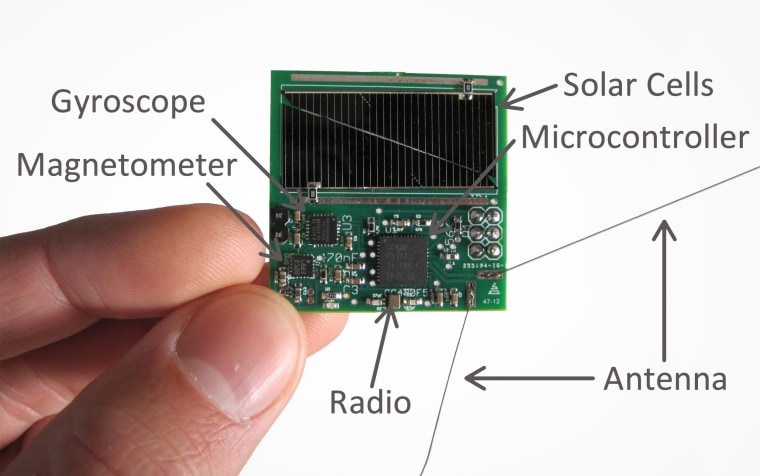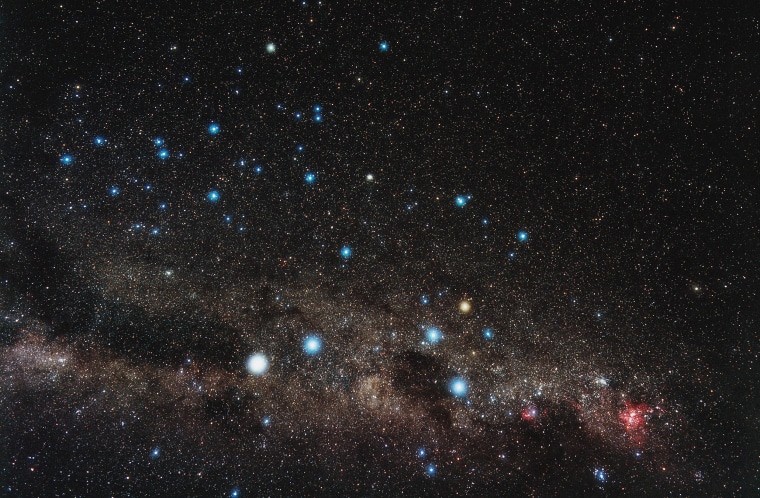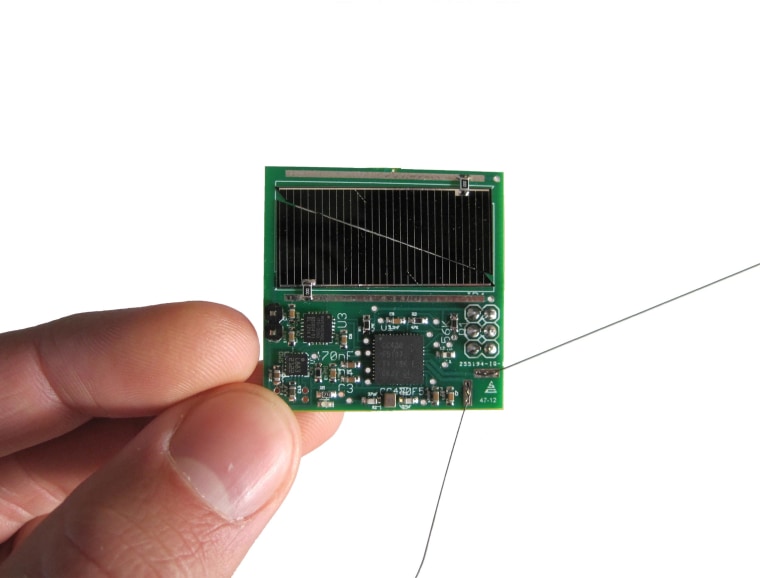In pursuit of one of space exploration’s biggest dreams — sending a spacecraft to a nearby star system to look for evidence of alien life — Breakthrough Starshot is putting its faith in the very small. The $100-million R&D initiative recently launched into Earth orbit multiple copies of what it calls the world’s smallest fully functional space probe.
Called Sprites, the experimental space vehicles weigh only four grams and measure 3.5 by 3.5 centimeters. But despite the small package — each device is built on a single chip — the Sprites are equipped with solar panels, computers, sensors, and radios. And they’re seen as a big deal by leading astronomers.
British cosmologist Dr. Martin Rees described the Sprites' success a huge development for miniaturized spacecraft, the Guardian reported. And Dr. Seth Shostak, senior astronomer at the SETI Institute in Mountain View, Calif., told NBC News MACH in an email, “To build a useful spacecraft that’s roughly matchbook size is...something that would have inconceivable not so long ago. Sputnik was the size of a grapefruit, and did very little in comparison to these Sprites.”
Breakthrough Starshot, which was announced in 2016 by physicist Stephen Hawking and billionaire entrepreneur Yuri Milner, sees the Sprites as the next step in the development of light-propelled “StarChip” probes that one day could visit distant exoplanets and report their findings back to Earth.
“This is a very early version of what we would send to interstellar distances,” Peter Worden, Breakthrough Starshot's executive director, told Scientific American.

Breakthrough Starshot hopes ultimately to send StarChips to the three stars of Alpha Centauri, system that lies about 4 light-years away in the southern constellation Centaurus. Recent research suggests that at least one of the planets in the system, a roughly Earth-sized world called Proxima b, might be habitable.
The initiative's plan calls for StarChips to travel at roughly 20 percent of the speed of light, or about 134,000,000 miles per hour. At that rate, Worden told NBC News MACH in an email, it would take the chips about 23 years to reach Alpha Centauri.
Sputnik was the size of a grapefruit, and did very little in comparison to these Sprites.
The Sprites, which were built by researchers at Cornell University, were launched June 23 aboard an Indian rocket and have been in radio communication with ground stations in California and New York since then, Breakthrough Starshot said in a July 26 news release. They cost only about $25 apiece to make and a few hundred dollars to launch, according to Dr. Zachary Manchester, a postdoctoral fellow in computer science at Harvard University and an advisor to Breakthrough Starshot.
Their trivial cost “will let us launch hundreds or even thousands of them in formations or ‘swarms’ to collect measurements in places we can’t send large, expensive spacecraft,” Manchester told MACH in an email. “For example, they could enter a planet’s atmosphere to directly sample it.”

Worden called the successful launch of the Sprites a “great start.” But he said “significant additional work will be needed before we are able to launch such spacecraft to Alpha Centauri.”
That may be a bit of an understatement. In addition to perfecting the StarChip itself, the initiative will need to develop sophisticated communications systems capable of transmitting data over interstellar distances, as well as durable light sails to attach to the chips and gigantic lasers to generate the light energy to push the sails.
Even if all goes well, it’s hard to predict exactly when those swarms might be sent on their way.
“The detailed dates will depend on the results of our research over the next five to seven years,” Worden said. “But we do hope to launch the interstellar nano-craft within the next several decades. Many challenges! But we think they are solvable.”


